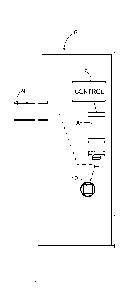Some of the information on this Web page has been provided by external sources. The Government of Canada is not responsible for the accuracy, reliability or currency of the information supplied by external sources. Users wishing to rely upon this information should consult directly with the source of the information. Content provided by external sources is not subject to official languages, privacy and accessibility requirements.
Any discrepancies in the text and image of the Claims and Abstract are due to differing posting times. Text of the Claims and Abstract are posted:
| (12) Patent: | (11) CA 2702744 |
|---|---|
| (54) English Title: | DOOR LOCK |
| (54) French Title: | VERROU DE PORTE |
| Status: | Granted and Issued |
| (51) International Patent Classification (IPC): |
|
|---|---|
| (72) Inventors : |
|
| (73) Owners : |
|
| (71) Applicants : |
|
| (74) Agent: | KIRBY EADES GALE BAKER |
| (74) Associate agent: | |
| (45) Issued: | 2019-06-11 |
| (86) PCT Filing Date: | 2008-11-06 |
| (87) Open to Public Inspection: | 2009-05-28 |
| Examination requested: | 2013-02-07 |
| Availability of licence: | N/A |
| Dedicated to the Public: | N/A |
| (25) Language of filing: | English |
| Patent Cooperation Treaty (PCT): | Yes |
|---|---|
| (86) PCT Filing Number: | PCT/FI2008/050636 |
| (87) International Publication Number: | WO 2009066003 |
| (85) National Entry: | 2010-04-13 |
| (30) Application Priority Data: | ||||||
|---|---|---|---|---|---|---|
|
In an embodiment according to the invention, the controller for
a solenoid in an electromechanical lock is arranged to generate motion power
to move the solenoid plunger and holding power to hold the solenoid plunger
in place so that the motion power generated consists of a higher power level
and a lower power level that are alternating.
L'invention porte, selon un mode de réalisation, sur un contrôleur pour un électroaimant dans un verrou électromécanique qui est agencé pour générer une puissance de mouvement afin de déplacer le noyau plongeur de l'électroaimant et maintenir la puissance afin de tenir le noyau plongeur de l'électroaimant en place de sorte que la puissance de mouvement générée est constituée d'un plus haut niveau de puissance et d'un plus bas niveau de puissance qui alternent.
Note: Claims are shown in the official language in which they were submitted.
Note: Descriptions are shown in the official language in which they were submitted.

2024-08-01:As part of the Next Generation Patents (NGP) transition, the Canadian Patents Database (CPD) now contains a more detailed Event History, which replicates the Event Log of our new back-office solution.
Please note that "Inactive:" events refers to events no longer in use in our new back-office solution.
For a clearer understanding of the status of the application/patent presented on this page, the site Disclaimer , as well as the definitions for Patent , Event History , Maintenance Fee and Payment History should be consulted.
| Description | Date |
|---|---|
| Maintenance Fee Payment Determined Compliant | 2024-11-02 |
| Maintenance Request Received | 2024-11-02 |
| Common Representative Appointed | 2019-10-30 |
| Common Representative Appointed | 2019-10-30 |
| Grant by Issuance | 2019-06-11 |
| Inactive: Cover page published | 2019-06-10 |
| Inactive: Final fee received | 2019-04-17 |
| Pre-grant | 2019-04-17 |
| Notice of Allowance is Issued | 2019-01-29 |
| Letter Sent | 2019-01-29 |
| Notice of Allowance is Issued | 2019-01-29 |
| Inactive: Q2 passed | 2019-01-23 |
| Inactive: Approved for allowance (AFA) | 2019-01-23 |
| Amendment Received - Voluntary Amendment | 2018-08-03 |
| Inactive: S.30(2) Rules - Examiner requisition | 2018-02-06 |
| Inactive: Report - No QC | 2018-02-02 |
| Change of Address or Method of Correspondence Request Received | 2018-01-09 |
| Amendment Received - Voluntary Amendment | 2017-09-06 |
| Inactive: S.30(2) Rules - Examiner requisition | 2017-03-07 |
| Inactive: Report - No QC | 2017-03-03 |
| Amendment Received - Voluntary Amendment | 2016-09-01 |
| Inactive: S.30(2) Rules - Examiner requisition | 2016-03-29 |
| Inactive: Report - QC passed | 2016-03-23 |
| Amendment Received - Voluntary Amendment | 2015-03-09 |
| Inactive: S.30(2) Rules - Examiner requisition | 2014-09-11 |
| Inactive: Report - No QC | 2014-09-05 |
| Letter Sent | 2013-02-20 |
| Request for Examination Received | 2013-02-07 |
| All Requirements for Examination Determined Compliant | 2013-02-07 |
| Request for Examination Requirements Determined Compliant | 2013-02-07 |
| Amendment Received - Voluntary Amendment | 2013-02-07 |
| Inactive: Cover page published | 2010-06-08 |
| Application Received - PCT | 2010-06-04 |
| Inactive: First IPC assigned | 2010-06-04 |
| Inactive: IPC assigned | 2010-06-04 |
| Inactive: IPC assigned | 2010-06-04 |
| Inactive: Notice - National entry - No RFE | 2010-06-04 |
| National Entry Requirements Determined Compliant | 2010-04-13 |
| Application Published (Open to Public Inspection) | 2009-05-28 |
There is no abandonment history.
The last payment was received on 2018-10-24
Note : If the full payment has not been received on or before the date indicated, a further fee may be required which may be one of the following
Please refer to the CIPO Patent Fees web page to see all current fee amounts.
Note: Records showing the ownership history in alphabetical order.
| Current Owners on Record |
|---|
| ABLOY OY |
| Past Owners on Record |
|---|
| MARKKU JURVANEN |
| MIKA PURMONEN |
| PASI KERVINEN |